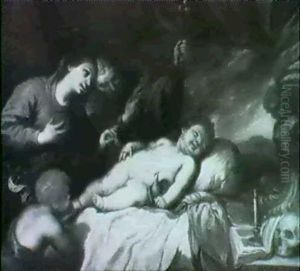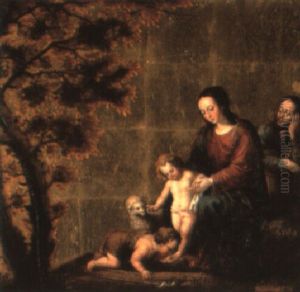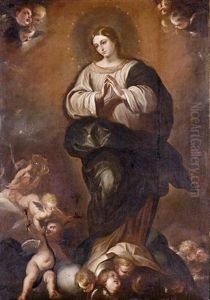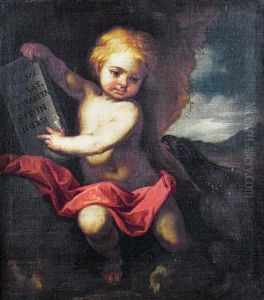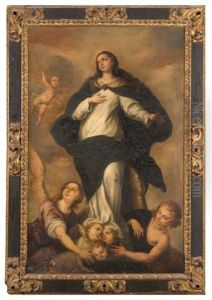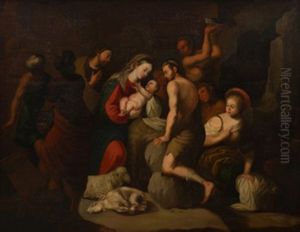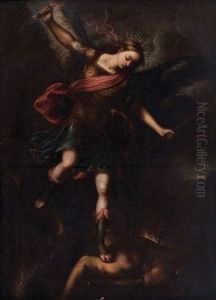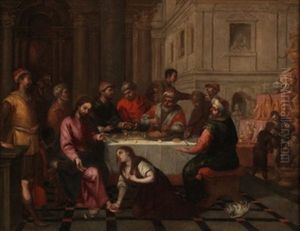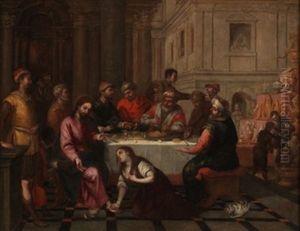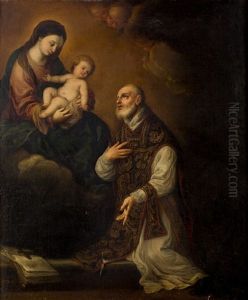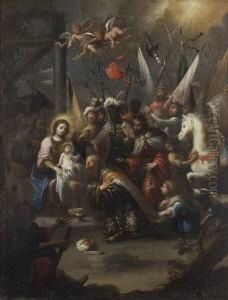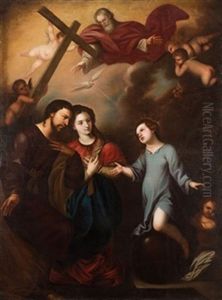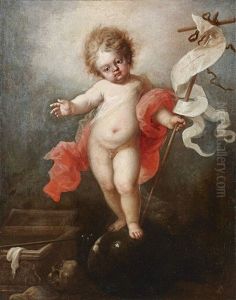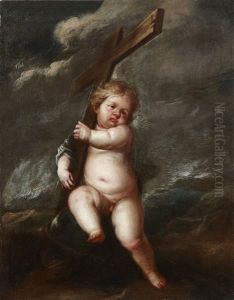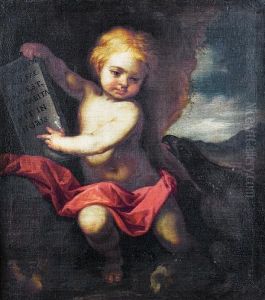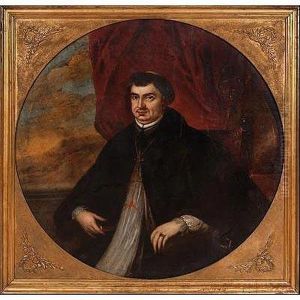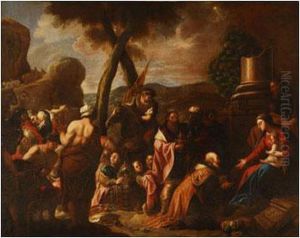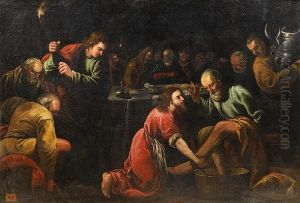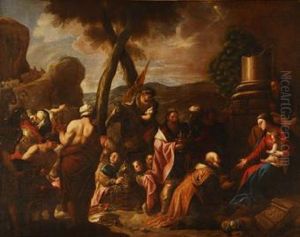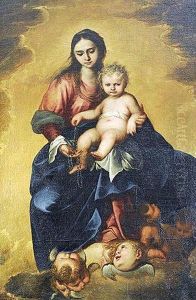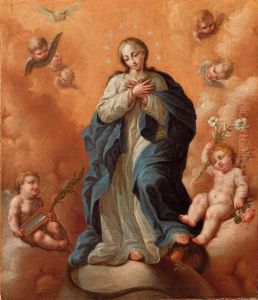Juan De Sevilla Romero Y Escalante Paintings
Juan de Sevilla Romero y Escalante, born in 1643, was a Spanish painter who made significant contributions to the Baroque period, particularly within the realm of religious art. His works are characterized by their detailed execution, vibrant use of color, and emotional depth, reflecting the intense spirituality and dramatic intensity typical of the Baroque movement. Sevilla Romero's artistry was deeply influenced by the socio-political and religious context of 17th century Spain, a period marked by the Counter-Reformation, which sought to reaffirm the Catholic Church's dominance in the face of Protestant challenges. This historical backdrop played a crucial role in shaping his thematic focuses and stylistic choices, pushing him towards subjects that emphasized religious devotion and the miraculous.
Sevilla Romero's training and career were centered in Seville, a city renowned for its artistic vibrancy during the Golden Age of Spanish art. He was part of a flourishing artistic environment, surrounded by contemporaries and predecessors such as Diego Velázquez, Francisco de Zurbarán, and Bartolomé Esteban Murillo, whose influences are discernible in his work. Despite the shadow cast by these towering figures, Sevilla Romero developed a unique style that balanced the realist tendencies of his peers with his own inclination towards mysticism and emotionality in religious subjects.
Throughout his career, Juan de Sevilla Romero y Escalante was prolific in producing altar pieces, devotional images, and large-scale religious compositions for churches and convents across Spain. His paintings often featured scenes from the life of Christ, the Virgin Mary, and the saints, executed with a profound sense of piety and devotion. One of his notable contributions to art was his ability to convey the humanity and divine aspects of religious figures, making his works accessible and emotionally compelling to the devout and everyday viewers alike.
Sevilla Romero's contributions extend beyond his individual works to his influence on the generation of artists that followed. He was a respected figure in the Sevillian art scene, not only for his artistic skills but also for his role in the training and development of younger artists. His legacy is seen in the continuation of the intense and emotive style that characterized Sevillian Baroque painting, bridging the gap between the high Baroque and the emerging Rococo style that would follow in the 18th century.
Juan de Sevilla Romero y Escalante died in 1695, leaving behind a body of work that, while not as widely recognized as some of his contemporaries, represents an important facet of Spanish Baroque art. His paintings continue to be studied and admired for their contribution to the understanding of Baroque spirituality, artistic expression, and the cultural context of 17th century Spain. Through his art, Sevilla Romero remains a testament to the rich artistic heritage of his time, embodying the fervor and devotion of the Counter-Reformation era.

